 |
 |
 |
| |
Risky Sex and Drug Use Common in HIV-Negative MSM With Acute HCV
|
| |
| |
Authors conclude: "Similar to the ongoing epidemic of AHC in HIV+ MSM, AHC is a problem for HIV negative MSM who have similar risks. HCV testing must be considered as a crucial part of sexual health screening in environments where risk factors or outbreaks of HCV exist. Accurate history taking, documentation of drug use and risk prevention messages are crucial in this high-risk population"
Written by Mark Mascolini
ICAAC 2014. September 5-9, 2014. Washington, DC
High-risk sex (such as group sex and fisting) and recreational drug use were frequent among HIV-negative men who have sex with men (MSM) diagnosed with acute HCV infection in a London sexually transmitted infection (STI) clinic [1]. One third had other STIs at HCV diagnosis.
Recent research has identified an epidemic of acute HCV infection among HIV-positive MSM in Europe and North America. This work indicates that most of these acute infections are sexually transmitted. Sexually active, HIV-negative MSM share many sexual behaviors with HIV-positive MSM, but HIV-negative men are not routinely screened for HCV. To get a better appreciation of acute HCV rates and risk factors among HIV-negative MSM, researchers at London's Chelsea and Westminster Hospital conducted this retrospective study.
From January 2010 to December 2013, the investigators identified all cases of HCV antibody-positive men without HIV infection. They used European AIDS Network (NEAT) criteria to classify 44 of these HCV infections as acute cases. One third of men (34%) had spontaneous HCV clearance, 25% began HCV therapy, 30% were under observation, and 11% were lost to follow-up.
Men with acute HCV infection had a median age of 37 years, and ages ranged from 24 to 75. Median initial HCV RNA stood at 5.47 log10 IU/mL (about 295,000 copies) and median ALT at 88 IU/mL. Among the 22 men in whom HCV genotype was determined, 19 had genotype 1, 1 had genotype 3, and 2 had genotype 4.
Thirty-six men (82% of 44) reported both insertive and receptive anal intercourse, 9% reported only receptive anal intercourse, and 2% reported only insertive anal sex. Twelve of these men reported group sex, 11 reported fisting, 21 reported any recreational drug use, and 14 reported anal sex without a condom while using drugs. About two thirds of the men did not know whether their partner had HIV, HCV, or HBV.
Two thirds of the men had no other STI when diagnosed with HCV, 15% had gonorrhea, 7% had syphilis, 7% had chlamydia, and 4% had both chlamydia and gonorrhea. Eight men (18%) had used postexposure prophylaxis (PEP) for HIV within 6 months of their acute HCV diagnosis. Two men had participated in an HIV preexposure prophylaxis (PrEP) trial. None of the men in follow-up had become infected with HIV.
Among 3811 HIV-negative MSM who sought care at this STI clinic during the study period, 565 (15%) had been tested for HCV.
The Chelsea and Westminster team concluded that HIV-negative MSM seeking care at STI clinics have risk behavior similar to HIV-positive MSM but usually do not get screened for HCV. As a result, onward transmission of HCV is possible. The researchers recommended HCV testing at routine sexual health screening for people with STI risk factors, particularly in regions with high HCV prevalence.
Reference
1. McFaul KM, Maghlaoui A, Nzuruba M, et al. Acute hepatitis C infection in HIV-negative men who have sex with men. ICAAC 2014. September 5-9, 2014. Washington, DC. Abstract V676.

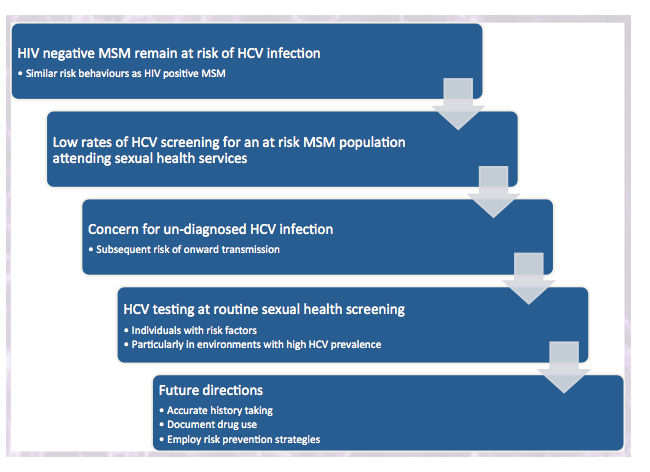
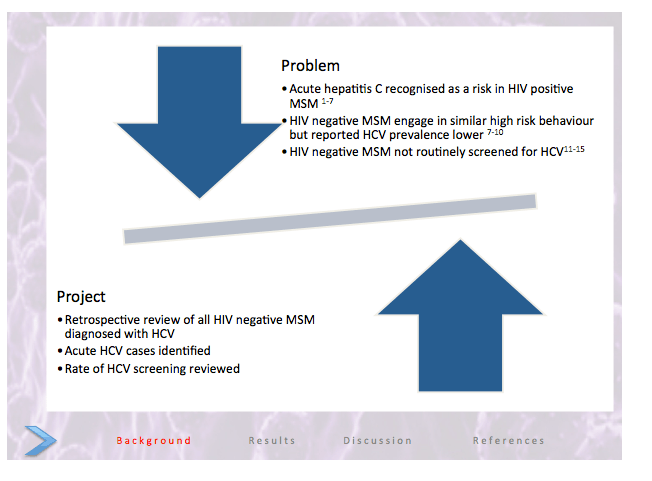
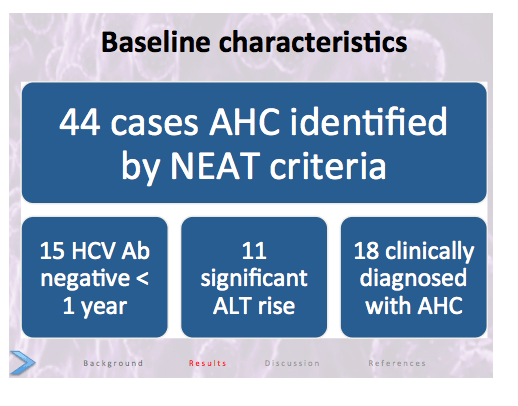
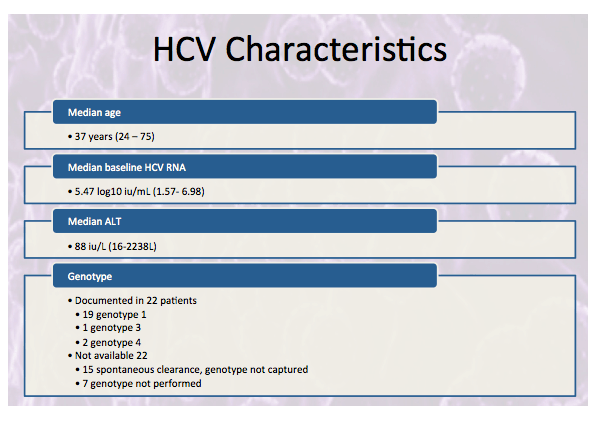
Program Abstract:
Background:Acute hepatitis C (AHC) infection is recognised in HIV infected men who have sex with men (MSM) but risk in HIV negative MSM remains unclear. We evaluated a population of MSM diagnosed with AHC in an urban sexual health clinic.
Methods: From January 2010 to December 2013, all cases of HCV antibody positive (Ab) HIV negative MSM were identified. European AIDS Network (NEAT) criteria were applied to determine acute infection.
Results: 45 individuals fulfilled acute hepatitis C criteria. 10 were RNA negative at baseline and classed as prior spontaneous clearance (SC). 3 had follow-up HCV RNA and remained RNA negative. 35 patients were viraemic; 15 with previously negative HCV Ab within 1 year, 17 with significant ALT elevation, and 3 with a clinical diagnosis. Median age at diagnosis was 37 years (range 24- 56). 82.9% reported unprotected anal sex, 34.3% group sex, 31.4% fisting. 27.8% had a sexually transmitted infection (STI) at HCV diagnosis- 4 gonorrhoea, 4 chlamydia, 1 gonorrhoea/chlamydia, and 2 syphilis. 75% patients were hepatitis B immune. 58.3% patients had documented recreational drug use (25.0% injection and 44.4% nasal use)- cocaine, GHB, mephedrone, crystal methamphetamine and ketamine. 31.4% engaged in sex whilst using recreational drugs. 5 further patients achieved SC. 10 patients received treatment; 7 achieved sustained viral response. 1 (2.9%) patient had a HCV -infected partner, 11 (31.4%) had HIV-positive partners, and 6 (17.1%) had HIV/HCV coinfected partners. 9 (25.7%) patients received HIV post-exposure prophylaxis (PEP) in the 6/12 prior to AHC diagnosis, 2 (5.7%) were in a pre-exposure prophylaxis study, and 24 (68.8%) had no PEP information documented HCV screening in HIV-negative MSM was reviewed. During November 2013, 3811 HIV negative MSM attended sexual health services. Only 14.8% (565/3810) had a HCV test (HCV RNA or HCV antibody).
Conclusions: Similar to the ongoing epidemic of AHC in HIV+ MSM, AHC is a problem for HIV negative MSM who have similar risks. HCV testing must be considered as a crucial part of sexual health screening in environments where risk factors or outbreaks of HCV exist. Accurate history taking, documentation of drug use and risk prevention messages are crucial in this high-risk population.
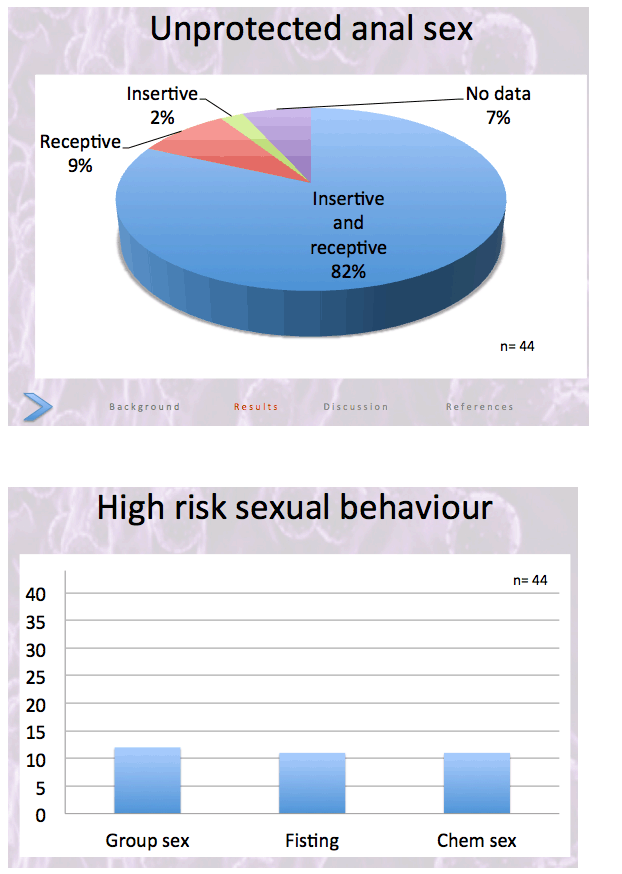
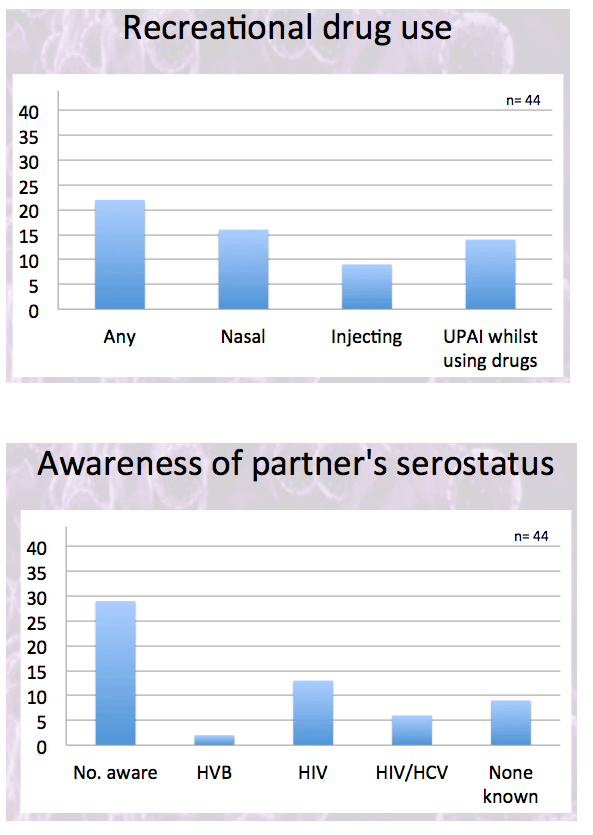
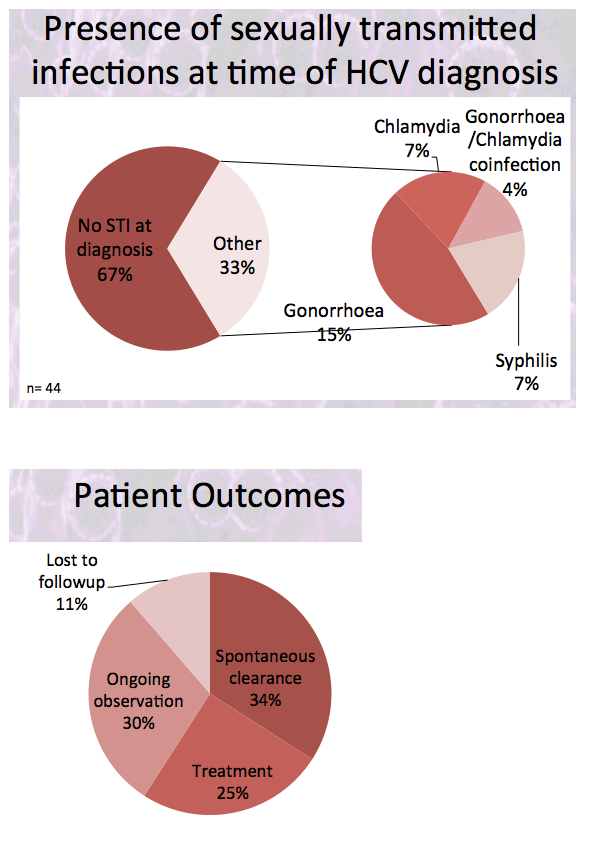

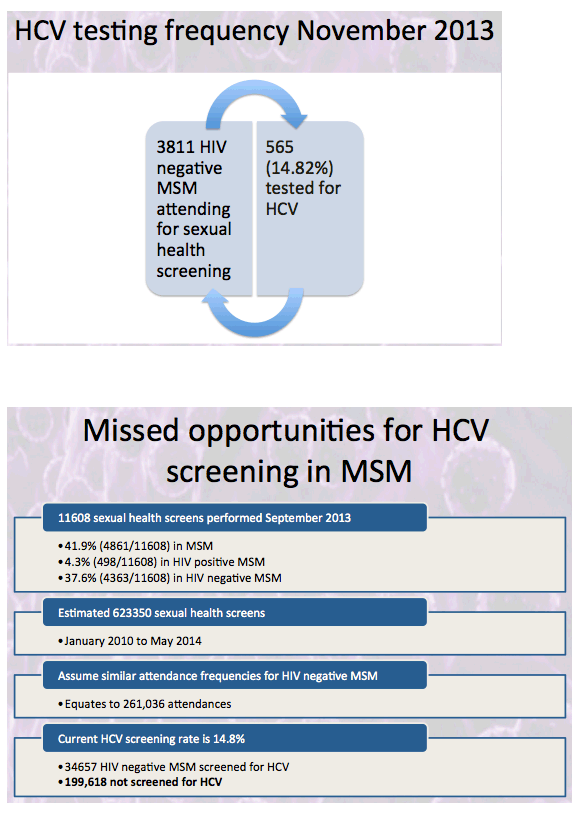
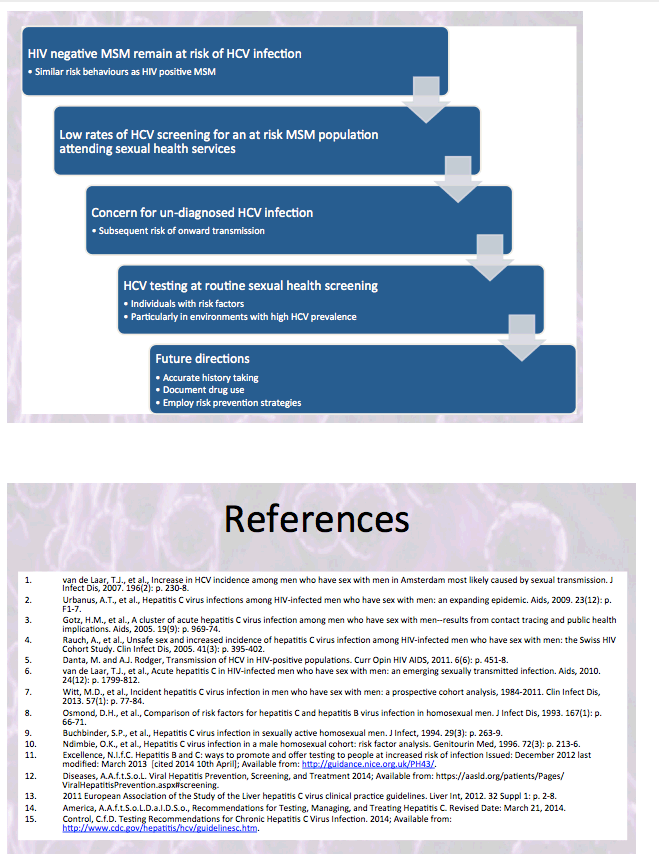
|
| |
|
 |
 |
|
|